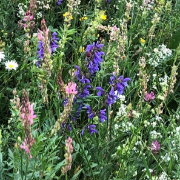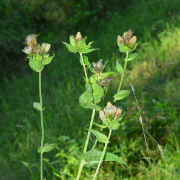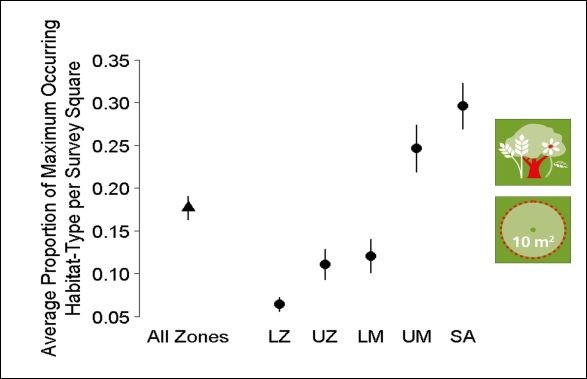The abiotic and biotic conditions may also vary within a habitat type, which influences the expression of the species community therein. The indicator ‘average diversity of habitat-type species’ evaluates the expression of the habitat-type species community within the habitats.
Based on an individual list for the corresponding habitat type, the number of habitat-type species occurring per sampling area is counted. The result is divided by the maximum number of habitat-type species found for the respective habitat type. The indicator denotes the average proportion of the maximum habitat-type species occurring per survey square.
Illustration: Examples of habitat-type species of the ‘rich lowland pasture’ habitat type

Meadow sage (Salvia pratensis, the blue flowers in the photo) is a habitat-type species of rich lowland pastures. This ecologically valuable species is not able to compete when soil moisture content and management intensity increase. Under such conditions, meadow sage is vanishing along with other species. An abundance of meadow sage is indicative of dry conditions, which are generally associated with increased availability of light and general species richness.

The cabbage thistle (Cirsium oleraceum) is another habitat-type species of rich lowland pastures; however, unlike meadow sage, it is indicative of a fairly high soil moisture content. The cabbage thistle needs time to develop, and blooms relatively late. Frequent mowing inhibits seed formation and may suppress this species; it thrives best in places that are mown only once or twice a year.
State of average diversity of habitat-type species

Contacts
Data reference:
Results





